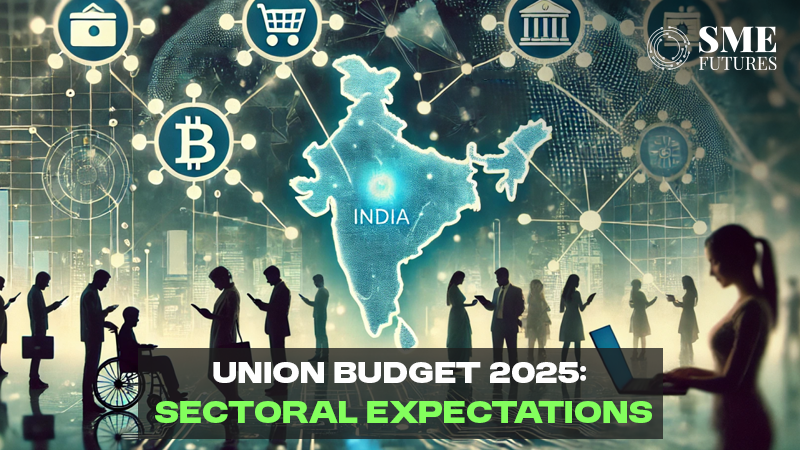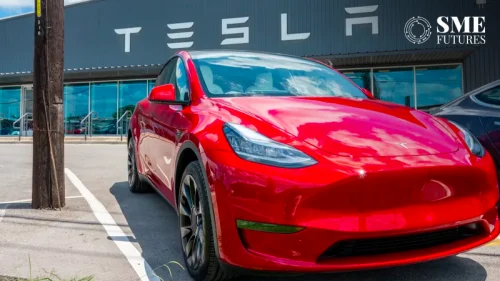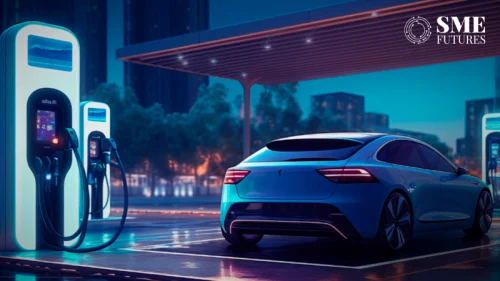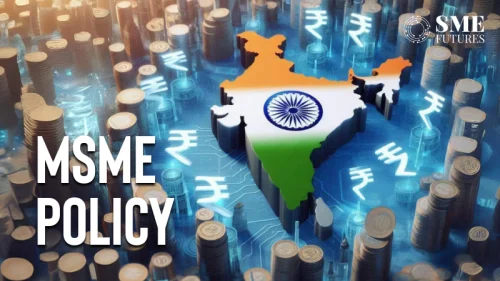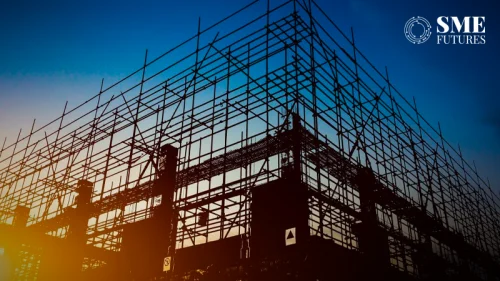Sectoral Expectations Union Budget: The Union Budget 2025 is near the corner and the government’s top priority is to balance fiscal consolidation with economic growth. Last year’s budget included significant resources toward infrastructure, digital innovation, and rural development, laying the groundwork for robust recovery. With GDP growth projected at 7 to 6.5 per cent, sectoral expectations for the 2025 budget are high. Industry leaders anticipate increased allocations to manufacturing and MSMEs, driven by the PLI scheme’s momentum. The digital economy seeks further incentives for AI and fintech, while agriculture demands greater outlay for sustainable practices. As fiscal prudence remains a priority, balancing ambitious growth plans with deficit targets will shape the budget’s tone, pushing for equitable reforms across industries. With high anticipation, from tax reforms to sustainability initiatives, here’s what leaders from various industries hope to see in the budget.
Economic outlook and tax reforms
Suman Chowdhury, Chief Economist and Executive Director at Acuité Ratings & Research, highlights the need to address two key factors slowing GDP growth—weak urban demand and sluggish private sector investments.
He emphasises, “We expect steps to enhance disposable incomes of salaried taxpayers by realigning and reducing income tax slabs. This can bolster urban consumption and drive demand for affordable housing projects. Additionally, policy measures to accelerate private sector investments, particularly in technology and innovation, are essential to make India’s goods and services globally competitive.”
Chowdhury also points out the importance of fiscal consolidation, expecting the fiscal deficit target to be around 4.5 per cent or lower for FY26. He adds, “New policy reforms in the agricultural sector could enhance productivity and mitigate food inflation risks.”
Online gaming: navigating growth amid challenges
Gaming market in India has surged exponentially. According to market research, its business has grown to $2.2 billion in 2023. Given this, Roland Landers, CEO of the All India Gaming Federation (AIGF), underlines the sector’s resilience despite regulatory hurdles like the 28 per cent GST.
He remarks, “The gaming industry has surpassed expectations, achieving $3.8 billion in FY24. We urge the government to reduce the GST rate and address retrospective taxation issues, which will provide clarity and foster innovation. Increased funding and policy support for the AVGC sector can position India as a global leader in gaming.”
Landers also stresses the importance of nurturing startups and fostering innovation to sustain the industry’s contribution to India’s digital economy. “We envision a future where more Indian developers and gaming studios create world-class games and content, solidifying India’s position as a global leader in gaming,” he adds.
FMCG sector: Stimulate consumption
The overall FMCG sector anticipates measures to stimulate consumption and support industry growth. Lately, indicators for the FMCG sector continue to be muted due to softening urban consumption and not-so-robust growth in rural areas.
Praveen Jaipuriar, CEO of CCL Products (India) Ltd., discussing the budget says, “Providing tax relief to individual taxpayers can increase disposable income and stimulate demand,”
Being from the coffee sector, Jaipuriar anticipates lowering GST rates on green coffee and reducing import duties. “Considering the recent increase in coffee prices, protectionist policies involving high import tariffs do not serve the intended purpose. In fact, lower import duties would give Indians the opportunity to explore world coffee at affordable prices, thereby increasing coffee consumption in the long run. Additionally, there should be incentives for exports,” he asserts.
India is primarily an instant coffee market. Spiralling green coffee prices have forced manufacturers to implement significant price increases. The 18 per cent GST adds to this burden and will likely lead to lower consumption. While green coffee exports crossed the $1 billion mark, it was largely due to increased green coffee prices. The volume of production has relatively remained stagnant.
Echoing the same demand, Sunil Agarwal, Co-Founder and Chairman of Joy Personal Care (RSH Global) says, “Lowering GST can help counter the decline in mass-consumption, support small FMCG manufacturers, and make essential goods more affordable, supporting inclusive growth,”
“Furthermore, the packaging industry in India is experiencing rapid growth and innovation, driven by the rising demand for e-commerce and sustainable packaging solutions. We look forward to policies that will strengthen the FMCG ecosystem, fostering growth, innovation, and affordability for consumers across the country,” he adds.
Auto sector demands incentives and easy taxes
The auto sector is awaiting simplification and rationalisation of GST classifications for auto components. They are expecting streamlined GST classifications to help create a more competitive environment for all stakeholders. Aimed at easing compliance and enhancing the efficiency of the sector, it will have a cascading effect on supply chain, including businesses where cost structures are influenced by the tax.
Kunal Sethi, CEO of The Detailing Mafia comments, “PLI scheme with more transparency and accountability in the allocation of incentives is expected to boost domestic manufacturing. Along with this, industry players are also looking forward to policies focused on addressing the challenges impeding the growth of the sector and more developments are expected, giving impetus to electric vehicles in the sector,” he says.
Speaking about pre-owned car segment, Himanshu Arya, Founder & CEO, Luxury Cart, anticipates lower tax in the upcoming budget that could make pre-owned vehicles more accessible.
“The sector is optimistic about supporting simple financing options from the banks with regulatory push, such as extended loan schemes and interest rate as competitive as new cars, specifically designed for pre-owned cars. Additionally, the industry is expecting incentives to promote the pre-owned car industry as an organised, streamlined, and transparent segment. Encouraging EV resale initiatives and providing subsidies for refurbished EV batteries can also contribute to the government’s push for sustainable mobility in the segment,” he adds.
Renewable energy: Speed up green transition
India’s current total renewable energy capacity has surpassed 200 GW. To achieve the aim of 500 GW from non-fossil sources by 2030, the renewable energy sector expects Rs 40 billion allocation—a 3 per cent increase over 2024.
Manish Dabkara, CMD of EKI Energy Services, highlights the budget’s potential to propel India toward its net-zero ambitions.
He remarked, “Enhanced investments in renewable energy and PLI schemes for supply chain decarbonisation are critical. Expanding clean mobility policies beyond four-wheelers to include electric bicycles can revolutionise decarbonisation efforts.”
Dabkara also calls for increased allocations for vocational skill development to support green technology adoption and maintenance. “Support for micro-enterprises, particularly in adopting cleaner energy sources, is crucial for widespread impact,”
Travel and tourism sector demands growth
Though the travel and tourism industry in India is expanding at a rapid pace, and big events like Mahakumbh 2025 are only adding to the industry’s profits, stakeholders require further safeguards.
Naina Parekh, Founder of EUME, emphasises the need for smart tourism solutions and niche tourism policies. “Digitising tourist experiences, enhancing public transport, and supporting sustainable travel accessories with reduced GST rates can position India as a year-round travel destination. These measures align with the government’s vision of building a vibrant and inclusive economy.”
Beyond ongoing infrastructure projects, it is essential to allocate specific funds for smart tourism solutions, such as digitising tourist experiences and enhancing public transportation networks to improve accessibility for domestic and international travelers.
Leveraging AI for financial innovation
In the upcoming Union Budget, it is critical for the Government to adopt a progressive and balanced framework for use of AI in the country’s financial ecosystem. With AI projected to contribute $15.7 trillion to the global economy by 2030, targeted investments in AI-driven payment systems can position India as a global leader in financial innovation.
Banking sector stakeholder, V Balasubramanian, CEO of FSS, calls for targeted investments in AI-driven payment systems to enhance security and optimise customer experiences.
“Additionally, there is a need for accelerating adoption of the Central Bank Digital Currency (CBDC) to advance financial inclusion. A digital rupee would provide underserved populations with access to formal financial systems, while enhancing payment efficiency and reducing operational costs. Lastly, continued investment in digital infrastructure will be essential to drive adoption and innovation to achieve the Viksit Bharat Vision of 2047,” he says.
Judiciary and legal infrastructure: Modernisation and cybersecurity
The Union Budget needs to address the pressing needs of India’s judiciary by allocating a robust budget for infrastructure development in courts. Despite being the backbone of the justice delivery system, many courts across the country struggle with inadequate infrastructure, including insufficient courtroom space, lack of technology integration, and poor facilities for litigants and staff.
Akshat Khetan, Founder of AU Corporate Advisory and Legal Services, highlights the judiciary’s need for robust infrastructure and technology integration.
He comments, “Allocating funds for e-court initiatives, AI-driven case management, and cybercrime units can expedite case disposal and strengthen cybersecurity. These measures will ensure efficient justice delivery and bolster digital trust.”
The Union Budget 2025-26 carries high expectations across sectors, with stakeholders urging the government to implement reforms that can stimulate economic growth, foster innovation, and strengthen India’s global competitiveness. From tax relief and infrastructure development to sustainability and digital transformation, the budget has the potential to pave the way for a brighter future.
Do comment on what do you expect out of the 8th budget of the finance minister Nirmala Sitharaman.

